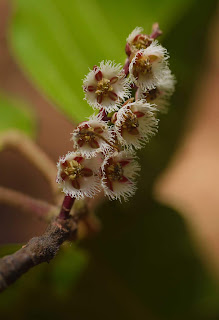Nissan Xmotion SUV
This dramatic three-row SUV concept shows off Nissan’s design direction for 2020 and beyond. My first inclination is a power train similar to the one the IMx crossover reportedly has, specifically two high output motors, one for each axle, that produce 429 horsepower and 516 pound-feet of torque combined. The power train also has a high capacity battery that’s supposed to return a driving range of more than 372 miles per charge.
The Nissan global design team behind the Nissan Xmotion concept wanted to bring something fresh to the segment by infusing Nissan's Japanese heritage and aesthetics while also preparing for a new automotive world driven by autonomous technologies. When viewing the new Xmotion concept for the first time, there's an immediate recognition of Nissan signature design elements, starting with the powerful front grille, fascia and boomerang headlamps.

The sharp-edged design theme carries over to the Nissan Xmotion concept's interpretation of the signature Nissan boomerang headlamps, which resemble forged steel blades. The headlamps integrate all functions into a single unit high beam, low beam, turn signals and positioning lamps. On the sides of the Xmotion concept, innovative U-shaped body side highlights impart a highly sculptural presence while creating a smooth, unbroken visual flow from front to rear fenders. The section is very crisp and deep, yet the movement it conveys is soft, subtle and quiet. The sculptural simplicity of the Xmotion concept exterior is contrasted by the rugged, metal crafted wheels and all-terrain tire design. Like the rest of the vehicle, the mechanical tool-inspired wheels and all-terrain tires coexist as one piece, with the tire tread physically laminated over the 21-inch aluminum alloy wheels. This application has the effect of the tires becoming part of the wheel, making the rubber-oriented rims look larger than their actual size. The tires were developed in conjunction with Michelin and feature run-flat construction.

Even the headrest design for the seats was inspired by Kumiko woodwork. It not only provides necessary support but also creates a sense of togetherness inside the vehicle. With the see-through headrest design, the rear-seat passengers can enjoy layers of various patterns as they look at the headrest from different angles. Scarlet red paint, developed with Japan lacquer in mind, is applied. On the console, an item called a floating commander can sense a passenger's movement. It contains a motion sensor inside and scans the motion of a passenger's hand to control the entertainment system, as well as the heating, ventilation and air conditioning. A special shade of silver was created to resemble pewter, a very solid yet malleable metal traditionally used in Japan for fine, detailed handicraft work. The color showcases the various body shapes and contours, as well as resonating very well with the colors and materials used inside the Nissan Xmotion concept. The wheels have a hammered texture, suggesting handcrafted finishes of the metal.

The interior palette includes colors representing Japan - red and white - as well as touches of black to symbolize modern technology. The interior colors transition gradually from white and grey in front - with some black accents to showcase the technology elements - to red in the rear areas. The Human Machine Interface (HMI) of the Xmotion concept, like the vehicle design, is very simple. For example, the switch from ProPILOT drive mode to manual drive mode, and vice versa can be done by using the PD Commander, located on the center console and steering switch.
The Nissan Xmotion concept also includes a total of seven digital screen portions. Three main displays and left and right end displays span the width of the instrument panel. There is also a digital room mirror in the ceiling and a center console display.

The displays and infotainment system can be controlled by gestures and eye movements. Intuitive controls and a voice command system allow drivers to focus on driving, helping them access various information in a smart, easy and safe manner. Fingerprint authentication is used to start the operation of the Xmotion concept. When the driver touches the fingerprint authentication area on the top of the console, the opening sequence starts, awakening the virtual personal assistant which takes the shape of a Japanese koi fish. The koi jumps into the main screen. After linking with the driver's smartphone, the navigation system automatically recognizes the destination, and other user information - such as weather, music and vehicle system info - will be activated. The navigation system recognizes the surrounding information while traveling.

For example, in autonomous drive mode, while changing lanes or overtaking other traffic, the virtual personal assistant will pick up other browsing information about points of interest along the way. In this way, the koi acts as a storyteller to connect human and machine. The Xmotion concept also uses a camera monitoring system in place of traditional door mirrors and displays images and other information on the end display screens. The system senses and monitors other vehicles around the Nissan Xmotion concept. The Nissan Xmotion concept connects Nissan's Japanese roots and rich heritage of ingenuity. It is a new creation while honoring the spirit and mind of those who have gone before. Its design and Nissan Intelligent Mobility technologies are ultimately very feasible for the future.























































